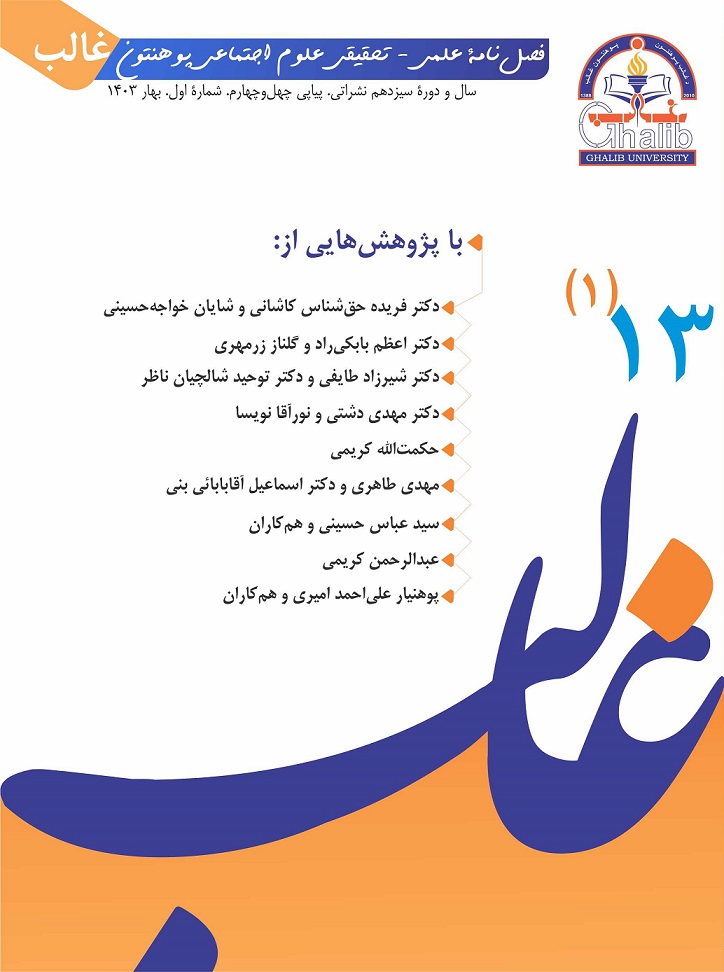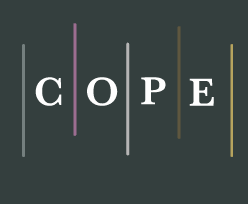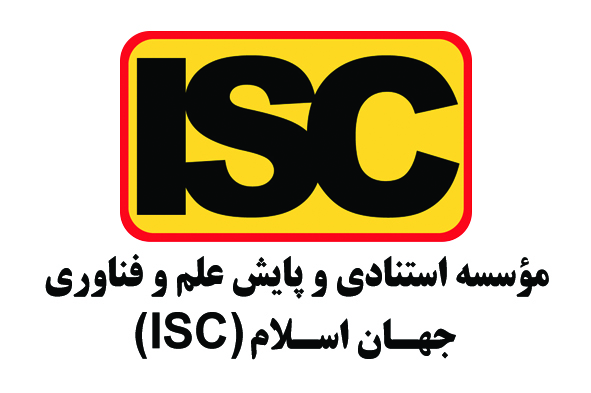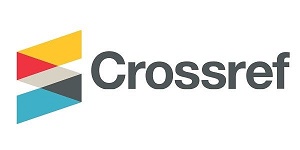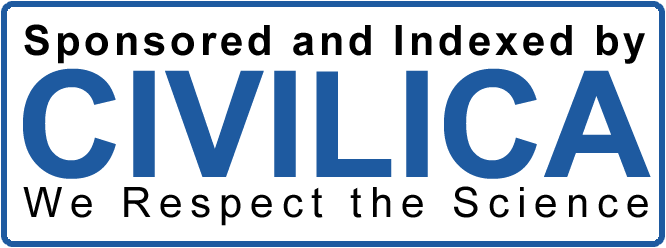بررسی تأثیر سطح تکنالوژی از طریق متغیّرهای میانجیِ نوآوری، ریسکپذیری و عملکرد حرفهیی بر عملکرد سازمان
(مورد مطالعه: مرکز رُشد زیستفنآوری پژوهشگاه ملّی مهندسی ژنتیک و زیستفنآوری در تهران – ایران)
DOI:
https://doi.org/10.58342/ghalibqj.V.13.I.1.1واژهگانِ کلیدی:
سطح تکنالوژی، نوآوری، ریسکپذیری، عملکرد حرفهیی، عملکرد سازمان، مرکز رشد زیستفنآوریِ تهرانچکیده
تکنالوژی بهعنوان یک پدیدۀ پویا و توأم با خلاقیت و نوآوری در سطوح مختلف جامعه و کسبوکار، چالشها و فرصتهای جدید ایجاد کرده است؛ ازاینرو، شرکتها برای تطابق با این تغییرات و حفظ رقابت، نیاز به استراتیژیهای نوآورانه در ساختار سازمانی و استفاده از ابزارهای دیجیتالی دارند. از نظر هدف این پژوهش در زمرۀ تحقیقات کاربردی و از لحاظ ماهیت توصیفی - پیمایشی است. شرکتهایی كه گرايش بهکارآفرینی دارند قادراند محيط بيرونی را براي كشف پارادايمهای تكنالوژی جديد مورد بررسی قرار دهند، كه اين امر منجر به عملکرد سازمان می گردد؛ همچنين پیشگامی در جهت پذیرش تکنالوژی در سازمان باعث حفظ مزيت رقابتي کسبوکار در محيط پُرتلاطم رقابتی میشود. جامعۀ آماری در این پژوهش کلیه کارکنان شرکتها، متخصصان و دانشجویان مرکز رُشد زیستفنآوری پژوهشگاه ملّی مهندسی ژنتیک و زیستفنآوری در تهران بوده است. افراد جامعه در این پژوهش 120 نفر بودند. براي جمعآوري دادهها از پرسشنامه استفاده شد. تجزيه و تحليل دادهها با استفاده از نرمافزارهای SPSS و Smart PLS و روش معادلات ساختاري انجام شده است. نتایج نشان میدهند که سطح تکنالوژی با نقش میانجی متغیّرهای نوآوری، ریسکپذیری و عملکرد حرفهیی بر عملکرد سازمان تأثیرگذار است. در این پژوهش تأثیر متغیّر نوآوری بر عملکرد سازمان معنادار نیست؛ اما متغیّرهای ریسکپذیری و عملکرد حرفهیی بر عملکرد سازمان تأثیر مستقیم دارد.
سرچشمهها/ منابع
آل حسینی، الهام و همکاران. (1397). «انواع تکنالوژیهای پیشرفته و طبقهبندی آنها برمبنای استانداردهای جهانی». اولین کنفرانس ملّی راهکارهای توسعهٔ صنایع پیشرفتهٔ استان گلستان: گرگان. https://civilihttps://civilica.com/doc/901264/
آهنگرانی، مجید اسماعیلنژاد. (1391). اصول و مفاهیم ریسک. انتشارات روابط عمومی بانک سینا. https://dl.abcbourse.ir › Library
برارینیا، الهه و همکاران. (1398). «الگوی اولویتبندی پروژههای فنآوری پیشرفته». فصلنامهٔ مطالعات مدیریت راهبردی. 10(38). 237-261. Doi: 20.1001.1.22286853.1398.10.38.10
ثابتی، مهدی. (1400). «مدیریت ریسک بنگاه مفاهیم و مدلها». صندوق نوآوری وشکوفایی. پائیز 1400. https://www.rtfunds.ir/
جوادی، الهه و همکاران. (1401). «تأثیر پارکهای علم و فنآوری بر کارآفرینی دانشجویان دانشگاه تبریز با تأکید بر نقش استارتاپها». ترویج علم. 22(13). 139-163. doi: 10.22034/POPSCI.2022.324377.1159
خاوری، سمیه و همکاران. (1392). «ویژهگیهای برنامهٔ درسی کارآفرینی فناورانه در دورهٔ ابتدایی». مطالعات برنامهٔ درسی. 18(68). 57 – 78. Doi: 20.1001.1.17354986.1402.18.68.3
دوالی، محمدمهدی و همکاران. (1401). «تأثیر فنآوری اطلاعات و نوآوری بر عملکرد با میانجیگری کارآفرینی سازمانی (مطالعه موردی: بانک سرمایه)». توسعهٔ تکنالوژی صنعتی. 20(48). 63-76dio: https://sid.ir/paper/985123/fa .
سجودی، ساجد و همکاران. (1401). «بررسی تأثیر فنآوری نوآورانه بر عملکرد شرکت با در نظر گرفتن نقش میانجی رفتار مصرفکننده». یازدهمین کنفرانس بینالمللی پژوهشهای مدیریت وعلوم انسانی در ایران. 25 اسفند 1401 – تهران.
سعدی، حسن و همکاران. (1398). «بررسی تأثیر توانایی نوآوری بر عملکرد نوآوری شرکتهای تولیدی پذیرفتهشده در بورس اوراق بهادار شهر تهران: با میانجی نوآوری فرایند و محصول». اقتصاد و مدیریت شهری: 29 (8). 40-58.
شیخ، جاوید؛ کارگر، هاشم. (1401). «تأثیر استراتژی تحلیل محیطی کارآفرینان بر عملکرد سازمان در شرکتهای کوچک و متوسط بهعنوان الگوی پیشرفت». فصلنامه علمی مطالعات الگوی پیشرفت اسلامی ایرانی. 10 (3). 287 – 307.doi: 20.1001.1.23295599.1401.10.3.13
عابدینی، هاجر و همکاران. (1400). «بررسی اثر شایستهگیهای حرفهیی بر عملکرد حرفهیی کارکنان دانشی با تحلیل نقش تعدیلگری جو نوآورانه». فصلنامه آموزش و بهبود منابع انسانی. شمارة 5. https://civilica.com/doc/1754652
غلامی فشارکی، محمد. (1397). «مدل معادلات ساختاری و کاربرد آن در مطالعات روانشناسی: یک مطالعه مروری». روانشناسی بالینی و شخصیت (دانشور رفتار). 16 (1). پیاپی 30. 25-265. Doi: 10.22070/cpap.2020.2852
فیضپور، محمدعلی و همکاران. (1399). «سطح تکنالوژی و اندازه مطلوب بنگاه شواهدی از بنگاههای صنایع تولیدی ایران در سالهای اول برنامه دوم، سوم و چهارم توسعه». فصلنامة پژوهشهای اقتصاد صنعتی. 4 (11). 49-60.doi: 10.30473/INDECO.2019.23344.104
محمدی بیرگانی، شهرام و همکاران. (1401). «بررسی رابطه بین مدیریت ریسک سازمانی و عملکرد تجاری اندازه گیریشده از طریق تجزیه و تحلیل ارزش افزوده اقتصادی». ماهنامة جامعهشناسی سیاسی ایران. 5 (11). 3647 – 3667. Doi:10.30510/psi.2022.295314.1996
منتظری نجفآبادی، میترا و همکاران. (1401). «پیشبینی سرمایههای فکری و عملکرد سازمان با تعهد حرفهیی مدیران دبیرستانهای متوسطه آموزش و پرورش شهرستان شهرکرد». فصلنامة تعالی تعلیم و تربیت و آموزش. 1 (2). 1 – 27.
مندگاری بامکان، علیمحمد. (1398). «نوآوری، عرصه تعامل بازیگران نوآوری با تکنیکهای مدیریت نوآوری». توسعه تکنالوژی صنعتی. 17 (38 ). 67 – 78.doi: 20.1001.1.26765403.1398.17.38.6
References
Abedini, H., Rahnaward, F. and Glozan A. G. (2022). Investigating the effect of professional competencies on the professional performance of academic staff by analyzing the moderating role of innovative atmosphere. Human resources training and improvement quarterly. Volume 5, second year, fourth issue, winter 1400, March 1400, page 70-90. https://civilica.com/doc/1754652 (In Persian)
Ahangarani, M. E. (2011). Principles and concepts of risk. Bank Sina Public Relations Publications. 2011. https://dl.abcbourse.ir (In Persian)
Al Hosseini, Elham, and Jafari, Seyed Mehdi and Taheri, Sima and Kazemi Talachi, Mehdi, 2017, types of high technologies and their classification based on global standards. The First National Conference on Approach to Development of Golestan Province Hight Technology Industries papers. https://civilica.com/doc/901264 (In Persian)
Al-Mamary, Yaser Hasan, and Mohammad Alshallaqi (2022). Impact of autonomy, innovativeness, risk-taking, proactiveness, and competitive aggressiveness on students’ intention to start a new venture. Journal of Innovation & Knowledge: 7 (4) 100239. https://doi.org/10.1016/j.jik.2022.100239
Bandera, Cesar, Regina Collins, and Katia Passerini (2018). Risky business: Experiential learning, information and communications technology, and risk-taking attitudes in entrepreneurship education. The International Journal of Management Education: 16 (2) 224-238. https://doi:org/10.1016/j.ijme.2018.02.006
Bararinia, E., Abbasi, R. and Safari, S (2018). Priority Pattern of Advanced Technology Projects. Strategic management studies. 237-260. https://doi:20.1001.1.22286853.1398.10.38.10 (In Persian)
Carroll, L. S. L. (2017). A comprehensive definition of technology from an ethological perspective. Social Sciences, 6 (4), 126. https://doi.org/10.3390/socsci6040126
Dai D., Han, S., Zhao, M., & Xie, J. (2023). The Impact Mechanism of Digital Transformation on the Risk-Taking Level of Chinese Listed Companies. Sustainability, 15(3), 1938. https://doi.org/10.3390/su15031938
Devali, M. M., Razavi, S. R. and Masumozadeh J, R. (2022). The effect of information technology and innovation on performance with the mediation of organizational entrepreneurship (case study: Capital Bank). Industrial Technology Development Quarterly, 20(48), 63-76. https://dio:sid.ir/paper/985123/fa (In Persian)
Duygan, M., Fischer, M., & Ingold, K. (2022). Assessing the readiness of municipalities for digital process innovation. Technology in Society, 72, 102179. https://doi.org/10.1016/j.techsoc.2022.102179
Faizpour, M. A., Elah Yaari, Masoumeh, and Naser Sadrabadi, Alireza. (2019). The level of technology and the optimal size of the company, evidences of Iran's manufacturing industries in the first years of the second, third and fourth development plans. Industrial Economics Research, 4(11), 49-60. https://doi:10.30473/INDECO.2019.23344.1048 (In Persian)
Ghazinoory, S., and Hashemi, Z. (2021). Do tax incentives and direct funding enhance innovation input and output in high-tech firms? The Journal of High Technology Management Research: 31 (1) 100394. https://doi.org/10.1016/j.hitech.2020.100394
Gholami Fisharaki, M. (2017). Structural equation model and its application in psychological studies: a review. Clinical Psychology and Personality (Behavioral Sciences), 16(1 (ser. 30)), 253-265. https://doi:10.22070/cpap.2020.2852 (In Persian)
Huang, Shuangfa, Qihai Huang, and Danny Soetanto (2023). Entrepreneurial orientation dimensions and the performance of high-tech and low-tech firms: A configurational approach. European Management Journa: 0263-2373. https://doi:oi:org/10.1016/j.emj.2022.03.002
Javadi, E., Alizadeh Aghdam, M. B., & Abbaszadeh, M. (2022). The effect of science and technology parks on entrepreneurship of Tabriz university students with emphasis on the role of startups. Popularization of Science, 13(1), 114-139. https://doi.10.22034/POPSCI.2022.324377.1159 (In Persian)
Khavari S., and Saraji, F. and Yousefzadeh C., Mohammad, R. 2023, Charachteristics of the curriculum of technological entrepreneurship in the elementary school, Curriculum Studies, 18(68), 57-78. https://dio:20.1001.1.17354986.1402.18.68.3.4 (In Persian)
Kikkawa, T. (2023). Introduction: What Is Innovation? Schumpeter, Kirzner, and Christensen. In History of Innovative Entrepreneurs in Japan (pp. 1-4). Singapore: Springer Nature Singapore. https://link.springer.com/chapter/10.1007/978-981-19-9454-8_1
Linton, G. (2019). Innovativeness, risk-taking, and proactiveness in startups: a case study and conceptual development. Journal of Global Entrepreneurship Research, 9(1), 20. https://link.springer.com/article/10.1186/s40497-019-0147-5
Luo, Y. F., Huang, J., & Gao, S. (2022). Relationship Between Proactive Personality and Entrepreneurial Intentions in College Students: Mediation Effects of Social Capital and Human Capital. Frontiers in Psychology, 13, 861447. https://doi.org/10.3389/fpsyg.2022.861447
Mandgari Bamakan, A. M. (2019). Innovation, arena assistance innovation agent to innovation management technique. Quarterly journal of Industrial Technology Development, 17(38), 67-78. https://doi:20.1001.1.26765403.1398.17.38.6.3 (In Persian)
Mohammadi Birgani, S., Aghaei C. A., & Kamali, E. (2022). Investigating the relationship between organizational risk management and business performance measured through economic value-added analysis. Iranian Political Sociology Monthly, 5(11), 3647-3667. https://doi:10.30510/psi.2022.295314.1996. (In Persian)
Montazeri Najafabadi M., Delfan A. Q. A. B., & Parinaz. (2022). Prediction of intellectual capital and organization's performance with the professional commitment of managers of high schools in Shahrekord city. Quarterly Journal of Excellence in Education and Training, 1(2), 1-27. (In Persian)
Palacios-Marqués, D., García, M. G., Sánchez, M. M., & Mari, M. P. A. (2019). Social entrepreneurship and organizational performance: A study of the mediating role of distinctive competencies in marketing. Journal of Business Research, 101, 426-432. https://doi.org/10.1016/j.jbusres.2019.02.004
Rahman, M. A., Luna, K. F., Ping, Z. L., Islam, M. S., Karim, M. M. (2021). Do risk-taking, innovativeness, and proactivity affect business performance of SMEs? A case study in Bangladesh. The Journal of Asian Finance, Economics and Business, 8 (5), 689-695. https://doi:10.13106/jafeb.2021.vol8.no5.0689
Saadi, Daiee-Karimzadeh and Etebarian-Khorasgani (2018). Investigating the effect of innovation ability on the innovation performance of manufacturing companies admitted to the Tehran Stock Exchange: with the mediation of process and product innovation. Economics and Urban Management: 29 (8) 40-58 (In Persian)
Sabeti M., (2021). Enterprise risk management, concepts and models. Innovation and prosperity fund. Fall 2021. https://www.rtfunds.ir (In Persian)
Sarker, Iqbal H (2022). Ai-based modeling: Techniques, applications and research issues towards automation, intelligent and smart systems. SN Computer Science: 3 (2) 1-20. https://doi:org/10.1007/s42979-022-01043-x.
Sheikh J., and Kargar, H. (2022). The impact of entrepreneurs' environmental analysis strategy on organizational performance in small and medium enterprises as a model of progress Scientific Quarterly Journal of Iranian Islamic Development Pattern Studies, 10 (3), 287-307. https://doi:20.1001.1.23295599.1401.10.3.13.1 (In Persian)
Sidorova, E., Kostyukhin, Y., Korshunova, L., Ulyanova, S., Shinkevich, A., Ershova, I., & Dyrdonova, A. (2022). Forming a risk management system based on the process approach in the conditions of economic transformation. Risks, 10(5), 95. https://doi.org/10.3390/risks10050095
Sojudi S., Mir, G., Seyyed, H., & Ahmad Khani, M., (2022) Investigating the impact of innovative technology on company performance considering the mediating role of consumer behavior.11th international conference on management & humanistic science research in Iran, 16 march 2023- Tehran. (In Persian)
Steenhuis, H. J., & De Bruijn, E. J. (2006, June). High technology revisited: definition and position. In 2006 IEEE International Conference on Management of Innovation and Technology (Vol. 2, pp. 1080-1084). IEEE. https://doi:10.1109/ICMIT.2006.262389
Wach K., Maciejewski, M., & Głodowska, A. (2022). U-shaped relationship in international entrepreneurship: Entrepreneurial orientation and innovation as drivers of internationalisation of firms. Technological and Economic Development of Economy, 28 (4), 1044-1067. https://doi.org/10.3846/tede.2022.16690
چاپ شده
ارجاع به مقاله
شماره
نوع مقاله
مجوز
حق نشر 2024 دکتر فریده حقشناس کاشانی،شایان خواجه حسینی

این پروژه تحت مجوز بین المللی Creative Commons Attribution 4.0 می باشد.

